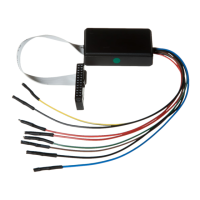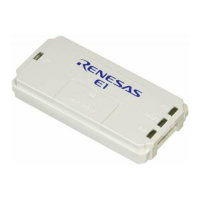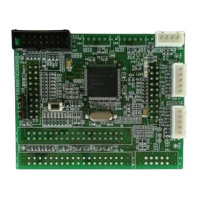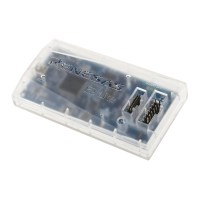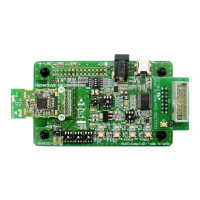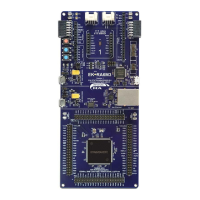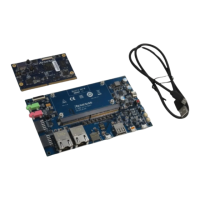A-D Converter
M30240 Group
Rev.1.00 Sep 24, 2003 Page 246 of 360
2.6.4 A-D Converter Methods
2.6.4.1 A/D Conversion method. 10-bit mode
The A-D converter compares the reference voltage (V
REF) generated internally based on the contents
of the successive comparison register with the analog input voltage (V
IN) input from the analog input pin.
Each bit of the comparison result is stored in the successive comparison register until the analog-to-
digital conversion (successive comparison method) is complete. If a trigger occurs, the A-D converter
carries out the following:
1. Fixes bit 9 of the successive comparison register.
Compares V
REF with VIN: [In this instance, the contents of the successive comparison register are
"1000000000
2
“(default).]
Bit 9 of the successive comparison register varies depending on the comparison result as follows.
• If V
REF < VIN, then “1” is assigned to bit 9.
• If V
REF > VIN, then “0” is assigned to bit 9.
2. Fixes bit 8 of the successive comparison register.
Sets bit 8 of the successive comparison register to “1”, then compares V
REF with VIN.
Bit 8 of the successive comparison register varies depending on the comparison
result as follows:
• If V
REF < VIN, then “1” is assigned to bit 8.
• If V
REF > VIN, then “0” is assigned to bit 8.
3. Fixes bit 7 through bit 0 of the successive comparison register.
Carries out step 2 above on bit 7 through bit 0.
After bit 0 is fixed, the contents of the successive comparison register (conversion result) are trans-
mitted to A-D register i.
V
REF is generated based on the latest content of the successive comparison register. Table 2.31
shows the relationship of the successive comparison register contents and V
REF. Table 2.32 shows
how the successive comparison register and V
REF vary while A-D conversion is in progress. Figure
2.93 shows theoretical A-D conversion characteristics.
Table 2.33: Relationship of successive comparison register contents and V
REF
Successive approximation register: n V
REF (V)
00
1 to 1023
V
REF x n - VREF
1024 2048

